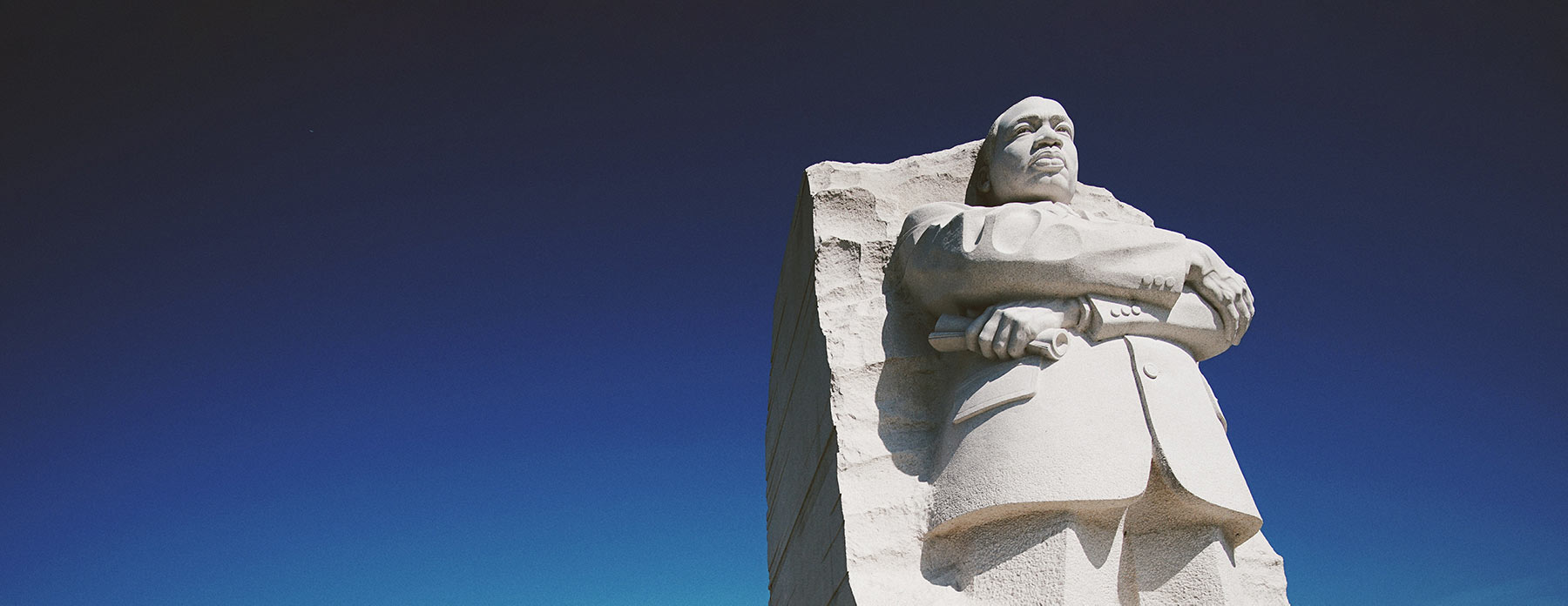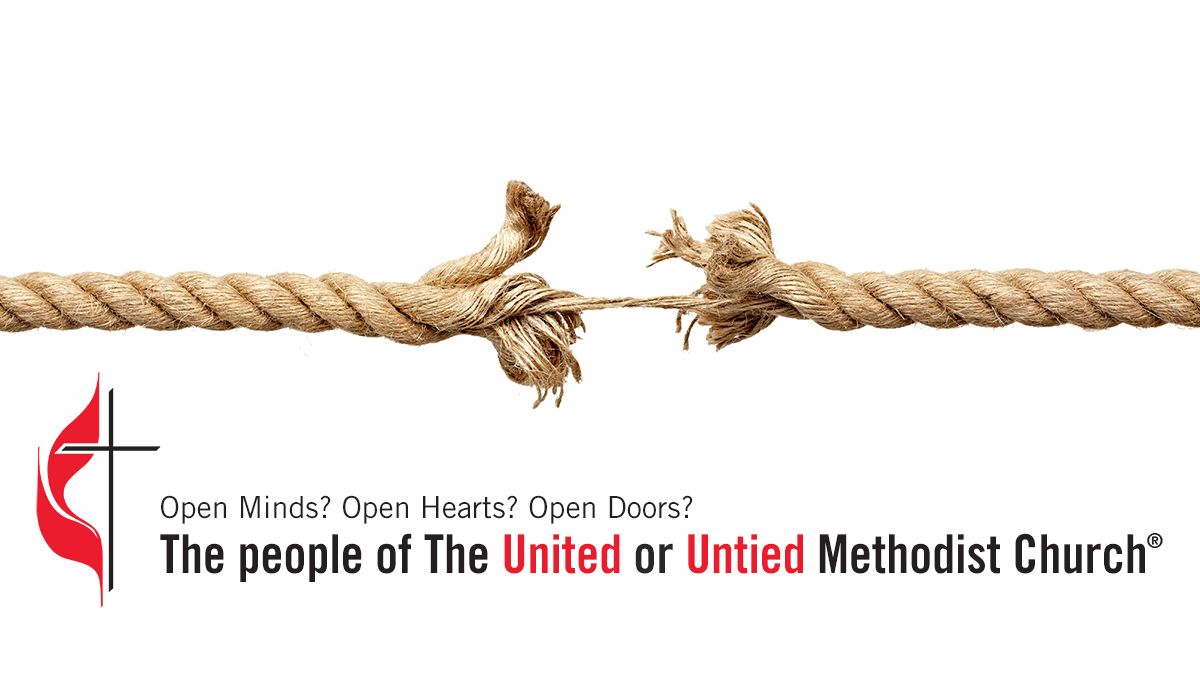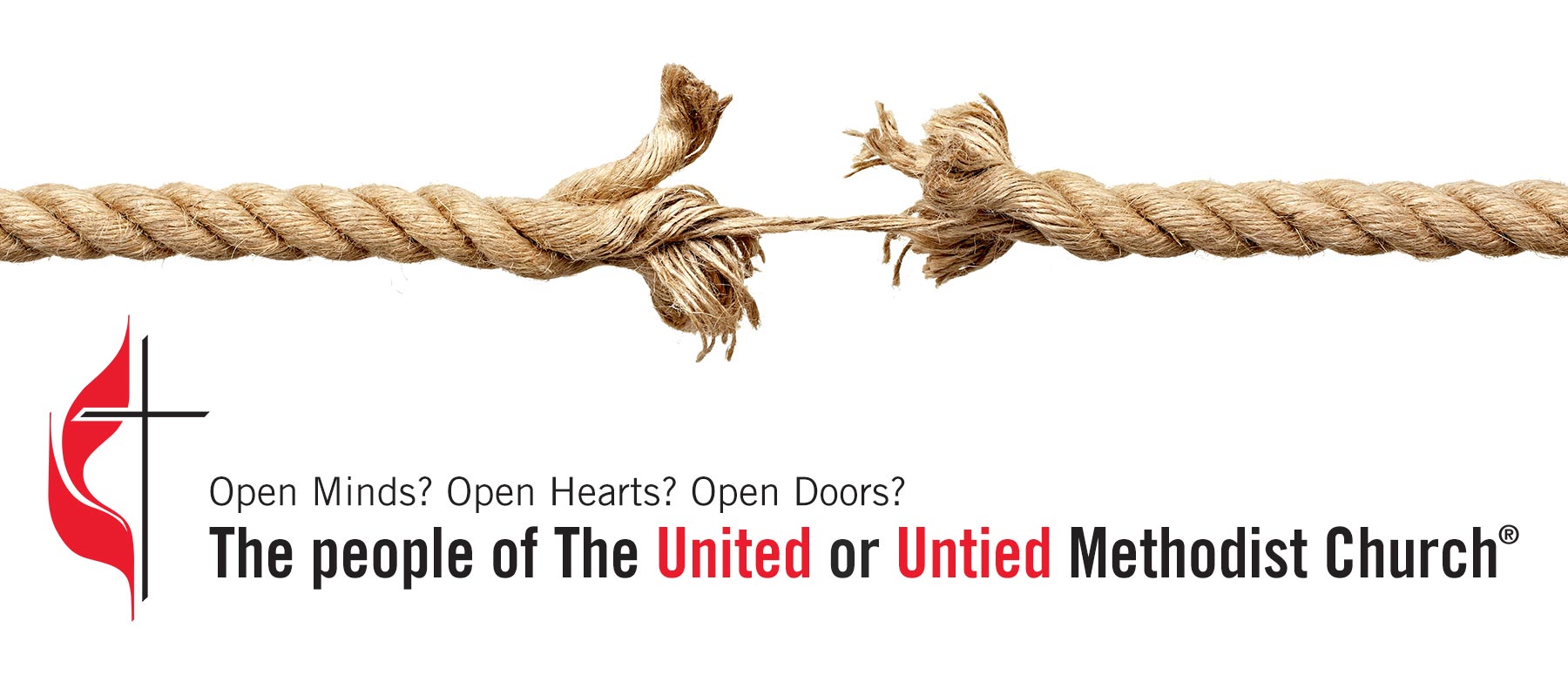
Church as Beloved Community
A Pastoral Letter from Bishop Elaine JW Stanovsky • January 2021
To the majority white United Methodists in the Greater Northwest Area, with an invitation to others to listen in and join the conversation.
But now, thanks to Christ Jesus, you who once were so far away have been brought near by the blood of Christ…. He broke down the barrier of hatred that divided us…. So now you are no longer strangers and aliens. Christ is building you into a place where God lives through the Spirit.
Beloved in Christ, I have carried you in my heart and prayers every waking moment through these seasons of pandemic, racial reckoning, civic unrest and violent attack on the U.S. Capitol. As we lament the image of a flag of the Confederacy waved brazenly in the Capitol, and brace for more extremist violence there and in state capitols across the country, the burden is heavy on people of conscience, who live in faith, hope and love through such demanding events.
I pray for the outgoing president, Mr. Trump, and for the incoming president, Mr. Biden, for elected and appointed government servants in every place and role. May the good in each prevail, and their sin be quenched.
A word to People and Pastors of Color in The United Methodist Church
But speaking the truth in love, we must grow up in every way…into Christ, from whom the whole body, joined and knit together by every ligament with which it is equipped, as each part is working properly, promotes the body’s growth in building itself up in love.
We have a long journey ahead. It is a testimony to the power of the Holy Spirit that you know and offer your gifts to the whole body of the church. It is not your responsibility to endure disrespect in the church, or to teach me and my white siblings how our words and actions harm and exclude. And yet, out of your love of God and in undying hope of a new day, you generously continue in relationship as the Church strives to grow in faith, service and witness. May God build the church up by showing us how our parts can work properly together in love.
I pray for our nation and its people. May values of respect, freedom, equity and fairness lead the way through our present distress and danger. I pray for people whose anger has spilled out in violence, anger over things both righteous and evil.
I want to bring a hopeful message to the Church. But the hope of this season is only visible through thick clouds. May we walk by the light of faith, in service to love until hope rises again, unobstructed.
As we celebrate the life and leadership of the Rev. Dr. Martin Luther King, Jr., I bring you a message that I know will be hard. It is rooted and grounded in my love for our Creator, Redeemer and Sustainer, and my love of all God’s people.
NOW IS THE TIME. THIS IS THE PLACE. WE ARE THE PEOPLE to overturn white privilege and supremacy in our hearts, our minds and in our communities and to build a beloved community of racial justice and equity.
NOW IS THE TIME to dismantle oppressive systems of institutional racism, which
- violate the dignity and sanctity of God’s creation
- divide communities
- deform the body of Christ
- isolate local churches from their neighbors and
- silence the prophetic witness of Christians to God’s justice and equity.
White racism arrived in the New World with Christopher Columbus in 1492, long before the Pilgrims or the Declaration of Independence elevated the value of freedom. It took root and has not been rooted out. It is alive and well in America. Now, cell phone videos of police violence against unarmed Black people expose persistent racism for all to see. Race is on the public agenda in a new and urgent way. Protests, demands, personal testimonies, documentaries and webinars have opened a window into how pervasive racism is in the life of our nation.
Compared to people of color, white people enjoy the “good life” disproportionately by nearly every measure: education, health care, environmental health, criminal justice and incarceration, voting rights, business ownership, employment, income, housing, and life expectancy, to name some. This is the privilege white people enjoy in America. The patterns of privilege and poverty in America are embedded in institutions, norms, practices and systems that do not depend upon individual bias, hatred or mistreatment. They have a life of their own.
THE CHURCH IS THE PLACE… to wake up and courageously face the sin of racism and to create beloved community.
God gives people of faith a vision of diverse human beings living together in right relationship with one another. But through history, the Christian Church has often created and maintained systems of racial inequity in America and around the world. Today, the church is called to recognize and dismantle its own racism and join a movement of racial reckoning and reconciliation in every place.
When the communities where the church is located experience transition especially identified as economic and/or ethnic, the local church shall engage in deliberate analysis of the community change and alter its program to meet the needs and cultural patterns of the new residents. The local church shall make every effort to remain in the community and develop effective ministries to those who are newcomers, whether of a cultural, economic, or ethnic group different from the original or present members.
By the year 2045, white people will be a minority of the U.S. population. In the states of Alaska, Idaho, Oregon and Washington, nearly every town and city is rapidly becoming more racially and ethnically diverse, but our United Methodist Churches in the region are predominantly white, middle class, aging and declining. For the most part, our churches are not adapting to the changing population by welcoming or engaging the growing number of their neighbors who come from different national, racial or ethnic heritages.
The UMC recognizes that the sin of racism has been destructive to its unity throughout its history. Racism continues to cause painful division and marginalization. the UMC shall confront and seek to eliminate racism, whether in organizations or in individuals, in every facet of its life and in society at large. The UMC shall work collaboratively with others to address concerns that threaten the cause of racial justice at all times and in all places.
The executive staff team of the Greater Northwest Area of The United Methodist Church recognizes inclusion as an essential practice of a vital church. We are building this practice into our own leadership teams and agendas. At every meeting, we participate in intercultural competency training and applying what we learn to our team and its work. We are intentional about inviting people of color into pastoral leadership of our churches to recognize and engage with the variety of people in their neighborhoods.
Racism persists in our churches.
Racism can exist without racial hatred. In many places, our churches are passive participants in racist systems that we have inherited and may not even be aware of. If we, the white majority, simply continue to do what we have always done – as the community changes and becomes more diverse – we will, silently, and without even recognizing it, perpetuate white privilege and supremacy.
This is why in my episcopal address to Annual Conference in September, I charged every local church to examine the images in your buildings, the priorities in your budgets and the people making decisions for the church, to see whether a rich variety of cultures and voices are present. Decisions are different if different perspectives are included in decision-making. In response to this charge, district superintendents initiated conversations about racism in every local church as part of its charge or church conference.
Sadly, we have begun to notice a pattern of overt racism within several congregations. This pattern is present in all three conferences and all four states. Some expressions of it include:
- criticizing pastors for preaching about racial justice
- denying the authority of the pastor over worship
- withholding respect, deference and trust that are usually extended to pastors
- criticizing the pastor’s grammar or pronunciation, especially in the case of a pastor for whom English is a second or third language
- expecting a pastor of color to adopt the cultural norms of the congregation without curiosity, question or discussion
- refusing to include a variety of cultural expressions within the worship life of the congregation
Sometimes congregations have even refused to accept a pastor I have appointed, due either to overt or more often subtle reasons of race.
As I hear these stories and discuss them within my cabinet, I am sorry to report that these attitudes are present, though often not predominant, in almost all of our churches. Any pastor of color who is appointed to any mostly white congregation can expect to encounter overt or implicit racist resistance, both personally and professionally.
Responsibilities and Duties of Elders and Licensed Pastors – To lead the congregation in racial and ethnic inclusiveness.
Racism has no place in the Church.
The Church is the body of Christ. We cannot allow racism to infect the body by tolerating these behaviors because they are inhospitable and dangerous for the beloved of our Savior. None of us can rest as long as our churches participate actively or passively in the sin of racism.
At Christian baptism, we pledge to resist evil, injustice and oppression in whatever forms they present themselves. Whether hot and hateful or gentle and well-intentioned, these comments and attitudes are harmful and they reinforce the narrow, fixed and insular scope of our congregations. Whatever good our churches do, it is necessarily compromised by the shadow cast by attitudes and habits that spring from normative white cultural assumptions.
Open itineracy means appointments [of clergy] are made without regard to race, ethnic origin, gender, color, disability, marital status, or age.
Throughout our lives, Jesus introduces us to new experiences, new people, fresh ideas. When our life paths cross with people from different parts of the world, with different life experiences, different cultural experiences, different aspirations that do not match our own, and may make us uncomfortable, our discomfort is often God at work, stretching and strengthening our love. Jesus invites us to set aside judgment and proceed to curiosity, asking: how is Jesus working through a new relationship to deepen our faith and strengthen the church or community?
The church must not value the familiar, traditional or comfortable over what is right, nourishing, emerging, and hopeful. God says “Look! I’m doing a new thing; now it sprouts up; don’t you recognize it? (Isaiah 42:19a. Embracing the new people and things God sends our way is a spiritual practice that breathes life into the church and through the church, into the world.
Your bishop watches over you in love.
My charge, as your bishop, is to oversee the spiritual and temporal affairs of the church. I name what I see and encourage the leaders and congregations under my care to grow in faith and witness for the kingdom/kin-dom of God. I see our spirits are not strong enough to follow Jesus into the beloved community he invites us to, nor do we have the courage to speak truth to a world that is awash in lies.
The United Methodist Church can and must become a movement that is awakening, learning, growing and moving toward racial awareness, intercultural competency and inclusive community.
In faithfulness to our baptismal vows, my cabinet and I are committed to working with pastors and laity to re-form our churches to recognize and acknowledge our sin and enter into a journey toward racial equity, justice and inclusion. Just as the members of the cabinet have a monthly discipline of intercultural competency training, the cabinet will develop a process for working with congregations to assess and recognize attitudes and behaviors that give preference to white culture within the church, and to take steps to become more aware and competent in inter-cultural and cross-racial relationships.
Cross-racial and cross-cultural appointments are made as a creative response to increasing racial and ethnic diversity in the church in its leadership. Cross-racial and cross-cultural appointments are appointments of clergy persons to congregations in which the majority of their constituencies are different from the clergyperson’s own racial/ethnic cultural background.
The goal of the cabinet is to assist every church to become an outpost of God’s inclusive love in each place and for all the people. Underlying this goal, we firmly resolve not to allow racially offensive or exclusive comments and behavior within our congregations , to go unchallenged and untransformed.
The Rev. Dr. Martin Luther King, Jr. and John Wesley inform our anti-racism work.
In 1963, Martin Luther King, Jr., wrote a letter in response to eight white religious leaders who criticized him for leading demonstrations and sit-ins protesting racial segregation in Birmingham, Alabama. In the letter, King reflects on his disappointment in religious leaders during the civil rights struggle, saying,
I have watched white churches stand on the sideline and merely mouth pious irrelevances and sanctimonious trivialities….
I have found myself asking: What kind of people worship here? Who is their God? Where are their voices?….
In deep disappointment, I have wept over the laxity of the church….Yes, I see the church as the body of Christ. But, oh! How we have blemished and scarred that body through social neglect and fear of being nonconformists.
Nearly 60 years later, the face of racism has shifted, but the church is no less lax today than it was in the 1963. We must journey together from being “almost Christian,” as John Wesley describes in his famous sermon, to becoming “altogether Christian,” living in ways that not only avoid sin, but that cultivate and promote virtue and justice.
In the weeks ahead, I’ll invite clergy to a conversation about how we can journey together on the road toward beloved community – freed from the heritage of deep, systemic racism.
As you live in the maelstrom of the week ahead and those to come, I thank God for your faithfulness, through times of peril and doubt and I pray God’s sustaining grace in your life, your family, and your ministries. Bad news never has the final word. Keep listening. There’s good news on the way!
Elaine JW Stanovsky
Bishop, Greater Northwest Episcopal Area
Chargeable Offenses Against a Church Member – A professing member of a local church may be charged with the following offenses, . . . harassment, including, but not limited to racial and/or sexual harassment; racial or gender discrimination . . .





















